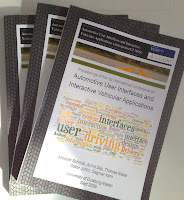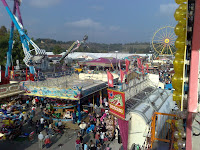The central role of ICT becomes very visible when it does not work. Sometimes for the good as I was late arriving at Düsseldorf airport but the Airberlin check-in system was down for a few minutes – just enough that I was still in time 🙂
In the evening I met Prof. Lorenz Hilty, who gave a talk in the afternoon at ETH Zurich. I missed the talk but after the interesting and though provoking dinner conversation I decided I should finally really read his book [1] – perhaps over Christmas. Meeting with Friedemann Mattern and Hans Gellersen was very inspiring and I hope we get a change to have future joint projects.
 Looking out over Zürich we talked about the transformation from the internet of things to the world wide web of things. The use of prototcol seems a little technical detail, but in my eye it may have a major impact. The WWW of things is creating a world of networked artefacts (much like the internet of things) but is completely based on Web protocols (e.g. http, RESTful web services). By working with web protocols the objects can easily become part of the web and interact with web-platforms and applications on the www (e.g. facebook, twitter, etc.). I expect by having a WWW of things we enable many more developers to create new and exciting applications on top of the internet of things. There are many challenging research questions. I am particularly interested in how will a good platform look like that empowers web programmers to create and distribute applications on the Web of things. I think we should run a workshop on this in the near future!
Looking out over Zürich we talked about the transformation from the internet of things to the world wide web of things. The use of prototcol seems a little technical detail, but in my eye it may have a major impact. The WWW of things is creating a world of networked artefacts (much like the internet of things) but is completely based on Web protocols (e.g. http, RESTful web services). By working with web protocols the objects can easily become part of the web and interact with web-platforms and applications on the www (e.g. facebook, twitter, etc.). I expect by having a WWW of things we enable many more developers to create new and exciting applications on top of the internet of things. There are many challenging research questions. I am particularly interested in how will a good platform look like that empowers web programmers to create and distribute applications on the Web of things. I think we should run a workshop on this in the near future!
[1] Information Technology and Sustainability: Essays on the Relationship between Information Technology and Sustainable Development. Lorenz M. Hilty. 2008.



































